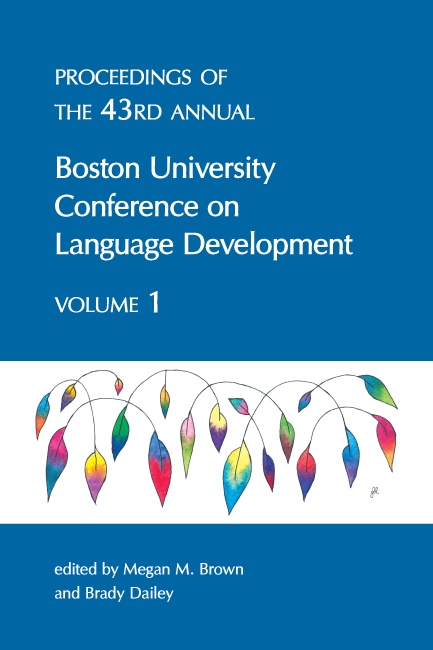The Meaning of Case: Productivity, Morphosyntactic Bootstrapping and Icelandic Datives
Do children use the same resources to learn verb meaning across languages? One approach to language acquisition in which universality has been extensively debated is the syntactic bootstrapping hypothesis, which proposes that children use the argument structure of a verb as a cue to its meaning (Landau & Gleitman 1985, Gleitman 1990, Naigles et al. 1993). In recent years, the extent to which verbal morphology and morphosyntax can be informative of verb semantics has been the subject of cross-linguistic research, with one of the primary questions being whether possibly (syntactic) universal cues have an advantage over language-specific (morphological) ones (e.g. Lidz et al. 2003, Göksun et al. 2008, Matsuo et al. 2012, Trueswell et al. 2012 and Leischner et al. 2016).
Using corpora and experimental acquisition data from Icelandic, a language with almost no argument-drop and rich case morphology, we provide qualified support for a morphosyntactic bootstrapping account that does not exclusively rely on universal cues, since a learning model detects the available systematic mappings of form and meaning (Yang 2016). In specific contexts, we argue that morphology can be as salient as the number of arguments. Additionally, we argue that experimental comprehension results show the necessary basis for the welldocumented productivity of the Icelandic non-default dative (Maling 2002, Svenonius 2002, Jónsson and Eythórsson 2005, Ingason 2010 and Barðdal 2011 i.a.). Specifically, we show that non-default subject case marking rules can be accounted for with Yang’s (2016) Tolerance Principle (TP).
Lidz et al. (2003), based on ideas of universal syntax-semantics mapping, argued that children initially rely on argument number and ignore morphological form to bootstrap verb meaning, even when the morphology provides stronger cues. This has been challenged from various perspectives, one of them being typological evidence against the universality of argument structure cues (Brown & Bowerman 2008).
Keywords:
language acquisition, case morphology, datives, Icelandic
BibTeX:
@INPROCEEDINGS {nowenstein2020meaning,
author = "Iris Nowenstein, Sigríður Sigurjónsdóttir, Charles Yang, Anton Karl Ingason, Joel C. Wallenberg",
title = "The Meaning of Case: Productivity, Morphosyntactic Bootstrapping and Icelandic Datives",
booktitle = "Proceedings of the 44th Boston University Conference on Language Development",
year = "2020",
editor = "Megan M. Brown and Alexandra Kohut",
pages = "402-415"
}

